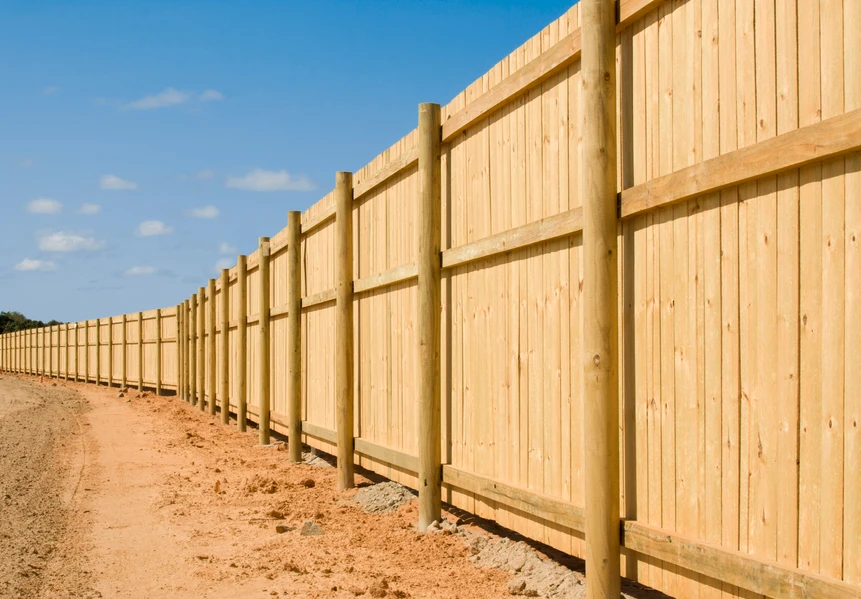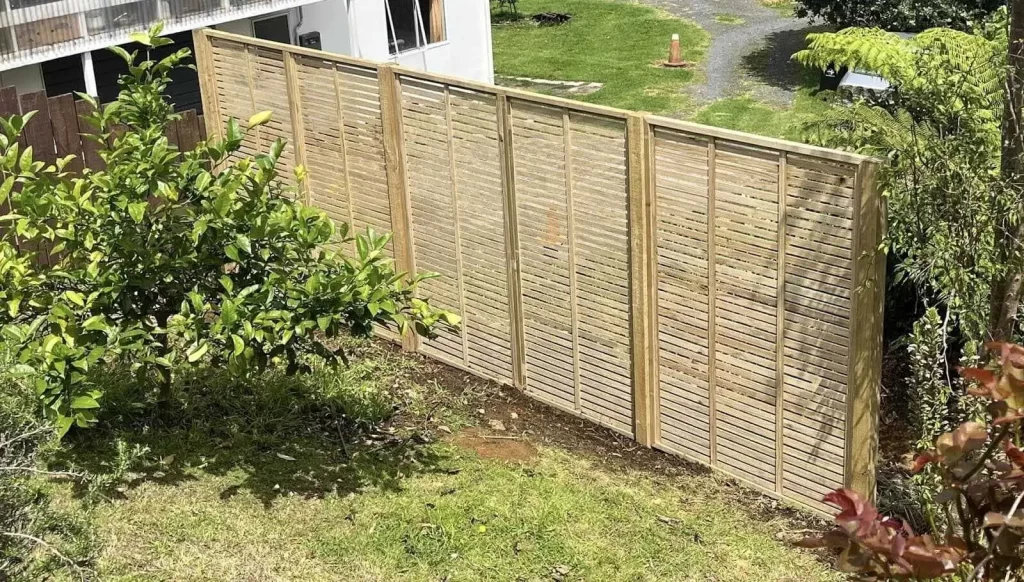Professional Fence Company vs. DIY: Which Is Better for Your Home Project?
Professional Fence Company vs. DIY: Which Is Better for Your Home Project?
Blog Article
A Comprehensive Guide to Fencing Install: What You Need to Find Out About Fencing Services
When it comes to installing a fence, you've obtained a lot to contemplate. You'll require to assess your residential or commercial property and choose if you want to deal with the installment yourself or hire a professional.
Comprehending Different Kinds of Fence Materials
When you're picking a fence, comprehending the different types of fence products is vital. Each material provides distinct advantages and drawbacks, influencing your choice. Wood supplies a classic look and can be tailored, yet it calls for routine upkeep and may rot gradually. Vinyl is low-maintenance and sturdy, withstanding fading and parasites, but it can be costlier upfront. Chain-link fence is affordable and functional for confining large areas, though it does not have privacy and visual allure. Steel secure fencing, like wrought iron or light weight aluminum, offers strength and beauty however may require corrosion protection. Composite materials blend the finest of timber and plastic, using toughness with a natural look. Consider your spending plan, wanted appearances, and maintenance choices when reviewing these alternatives. Eventually, picking the appropriate material will assist you develop a fence that fulfills your needs and enhances your home's value.
Assessing Your Residential Property and Secure Fencing Needs
Prior to you start your fence installment, it's vital to evaluate your building limits and the function of your secure fencing. Comprehending neighborhood laws and licenses will also assist you stay clear of any kind of legal problems down the line. By thinking about these variables, you'll ensure your fence fulfills both your demands and area requirements.
Residential Or Commercial Property Borders and Lines
Comprehending your home limits is crucial for a successful fence installation, as it not just helps you establish where your fencing will go yet likewise guarantees you're valuing your neighbors' space. Beginning by reviewing your residential property act or study, which usually details the specific borders. You may also intend to talk to an expert surveyor if you're not sure.
As soon as you've established your boundaries, note them clearly with stakes or flags. This visual help will certainly lead you throughout the setup and avoid any type of disputes with neighbors. Keep in mind, neighborhood zoning legislations may determine fencing positioning and elevation, so check those laws too. Taking these actions assurances your fencing is correctly placed and certified, making the whole process smoother for you.
Purpose of Fencing
Secure fencing serves multiple functions that can considerably improve your home. First, it supplies protection by producing an obstacle that hinders intruders and shields your possessions. Second, it supplies personal privacy, allowing you to enjoy your outside space without stressing over spying eyes. Third, fence can define your residential property limits, making it clear where your space finishes and your next-door neighbor's starts. Furthermore, it can enhance the visual charm of your home, adding character and design while raising curb charm. A well-placed fencing can assist manage noise from close-by roadways or next-door neighbors and also keep pets and children safe. By reviewing your specific needs, you can choose the ideal kind of fence to attain these benefits properly.

Local Rules and Permits
Exactly how can you ensure your fencing setup follows local laws? Begin by contacting your regional zoning office or community internet site. Fence Builders. They commonly have standards concerning fence elevation, materials, and positioning. You'll likewise intend to discover if you require an authorization before beginning your job. Some locations need authorizations for any new fence, while others might just need them for taller structures.
Additionally, think about property lines and any kind of easements on your land. Marking your boundaries can stop conflicts with next-door neighbors or prospective lawful concerns. By understanding these policies ahead of time, you can prevent costly mistakes and establish your fencing is constructed to last, improving both your building's worth and your satisfaction.
Local Laws and Permits for Fencing
Before you begin your fencing task, it's important to inspect neighborhood laws and acquire any essential permits. Each city or area has its very own policies concerning fencing height, products, and positioning. These guidelines assure that your fencing adheres to security criteria and area aesthetics.
Beginning by seeing your neighborhood zoning office or their website to discover Find Out More details needs. Fencing in South Auckland. You may need to send a fencing strategy, outlining measurements and materials. Some areas may also need a study to verify home boundaries. Do not fail to remember to take into account any homeowners' association (HOA) guidelines, as they can impose extra constraints.
Overlooking to comply with these policies can result in penalties or forced elimination of your fencing, squandering both time and cash. moved here Take the time to research and protect the proper permits for a smooth installment process. This action is crucial in seeing to it your job aligns with local legislations and community criteria.
Picking Between Do It Yourself Setup and Expert Services
Are you thinking about whether to tackle the fencing installation yourself or work with a professional? If you're helpful and have experience with comparable projects, DIY could save you cash.
Installing a fencing takes time, and if you're handling a busy timetable, hiring a professional can assure it gets done successfully. If your lawn has challenging terrain or certain layout needs, specialists bring competence that can make a distinction.
Finally, consider regional policies. A professional recognizes the licenses and codes needed, assisting you avoid potential fines. Ultimately, evaluate your abilities, time, intricacy, and guidelines to make the most effective choice for your fencing job.
Step-by-Step Overview to Fence Installment
Once you've chosen to progress with your fence installment, following a structured detailed method will assure a smooth procedure. Start by noting the fencing line with stakes and string to picture the layout. Next, examine neighborhood laws to verify conformity with height and property lines.
Dig message holes at the very least 2 feet deep, spaced according to your fencing kind-- typically 6 to 8 feet apart. Put the posts into the holes and load them with concrete for stability. When the articles are established, attach the horizontal rails or panels, making certain they're degree.
Check for any kind of loosened connections and make needed adjustments. Your fencing needs to now be prepared to boost your residential or commercial property and give the privacy or safety and security you require!
Upkeep Tips for Durability of Your Fencing
To maintain your fencing looking great and long lasting longer, regular maintenance is essential. You ought to establish up a cleaning schedule, examine for any damage, and apply protective coatings as needed. By staying proactive with these tasks, you'll guarantee your fence continues to be tough and attractive for years to come.
Regular Cleansing Set Up
Begin by rinsing your fencing with water at least as soon as every season to get rid of dirt and particles. Don't neglect to inspect for any corrosion on metal fencings; a cable brush can aid eliminate it, adhered to by a coat of rust-resistant paint. Maintaining your fence tidy not only enhances its look yet likewise extends its life, conserving you money in the lengthy run.
Examine for Damages
Routinely evaluating your fencing for damage is important if you desire to preserve its stability and durability. Start by strolling around your fencing to look for visible indications of wear, such as fractures, loose boards, or rust. Examine for any kind of signs of insects, like click over here now termites or woodpeckers, that could jeopardize your fence's structure.
Apply Protective Coatings
After examining your fence for damages, using protective layers is a vital action in guaranteeing its durability. Depending upon the material, you'll want to choose the appropriate sort of coating. For wood fences, a high-grade sealant or wood tarnish can avoid moisture absorption and hinder insects. If your fence is vinyl or metal, think about a UV-protective spray or paint to avoid fading and rust.
Make certain to cleanse the surface thoroughly before application, as dust and crud can weaken the finish's efficiency. Use the finish in dry weather for much better bond, and do not fail to remember to comply with the manufacturer's directions for the very best results. Regularly reapply every few years to keep your fence looking excellent and standing solid versus the components.
Price Factors To Consider and Budgeting for Your Fencing Job
When preparing your fencing task, understanding expense considerations is important to staying within spending plan. Start by figuring out the sort of material you want, as prices can differ substantially between wood, plastic, and metal. Do not fail to remember to variable in labor expenses-- hiring experts could conserve you time but can boost your overall expenses.
Following, gauge your residential or commercial property to calculate the linear footage required, as this straight effects material costs. Additionally, consider any authorizations you could require, which can include in your budget plan.

Lastly, it's a great concept to reserve a contingency fund for unforeseen expenses. By intending meticulously and considering these elements, you can create a realistic spending plan that meets your fence requires without damaging the financial institution.
Frequently Asked Concerns
How Long Does the Average Fencing Installation Take?
The standard fence installment usually takes one to three days, depending upon the fencing kind and size of your yard. You'll need to think about any type of delays due to weather or allow demands too.
What Should I Do if My Fence Is Harmed?
If your fence is harmed, first analyze the extent of the damage. Repair small issues yourself, yet for major troubles, think about getting in touch with an expert. Do not wait as well long; it'll aid avoid even more complications.
Can I Set Up a Fencing on an Incline?
Yes, you can set up a fencing on an incline. You'll require to adjust your installation approach, either by tipping the panels down or making use of a racked layout to ensure stability and appropriate alignment with the terrain.
What Are the very best Practices for Fence Painting?
To paint your fence efficiently, begin with correct cleaning and sanding. Usage high-quality paint and apply in also strokes. Don't forget to select the ideal weather for paint, ensuring it's completely dry and moderate.
How Frequently Should I Inspect My Fence?
You should check your fencing at the very least twice a year, concentrating on indicators of damages, rot, or corrosion. Normal checks aid you catch issues early, guaranteeing your fence continues to be strong and visually enticing longer.
Report this page